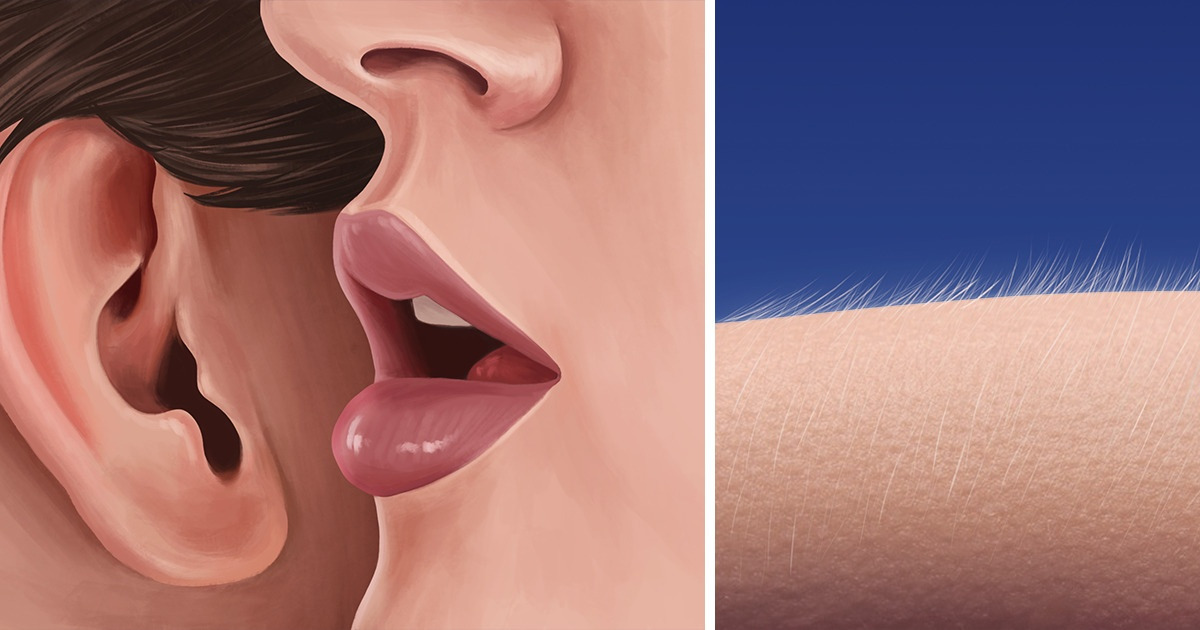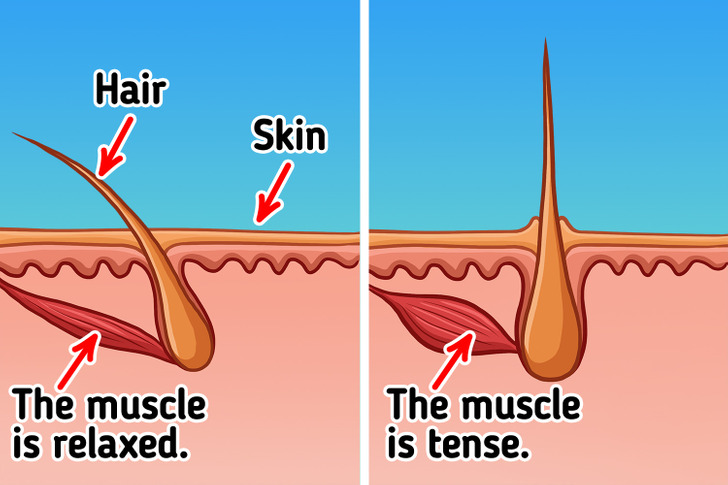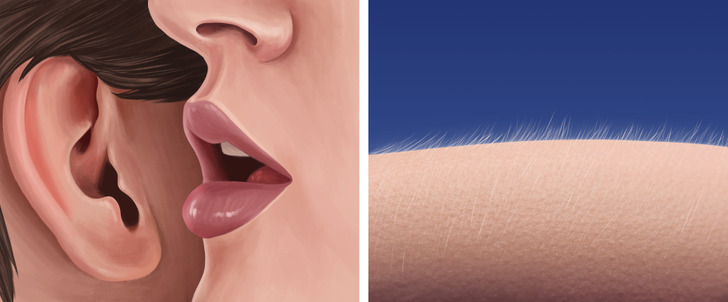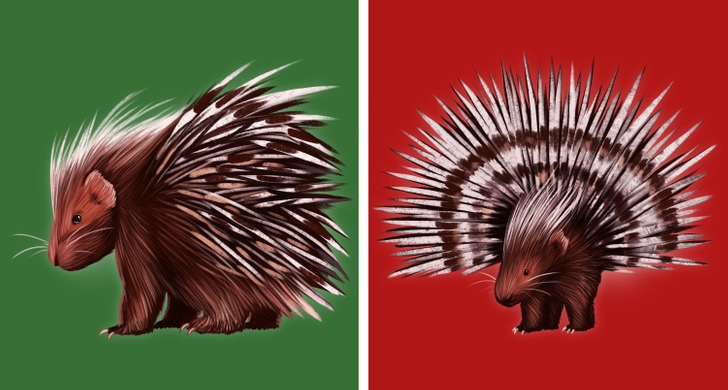Why We Get Goosebumps on Our Skin

Goosebumps are a frequent guest on our bodies. They appear not only from cold but also from strong emotions, both negative and positive.
But what causes this involuntary reaction, and does it have any function? 5-Minute Crafts is sharing some curious facts about this phenomenon.
What goosebumps actually are

Getting goosebumps is a reaction that our body does automatically in response to something. It is known as the pilomotor reflex. The name “goosebumps” appeared quite naturally, taking into account that the skin covered with bumps looks like a goose without feathers. In general, it’s quite a harmless reaction. There is no need to treat or prevent goosebumps. However, if getting them makes you feel uncomfortable, you can try to avoid them by dressing warmly or avoiding stressful situations.
The reasons for the appearance of goosebumps

Goosebumps appear on our body when the tiny muscles located at the base of hair follicles contract and the hairs stand on end. This can occur both from cold or from strong feelings, such as fear, anxiety, inspiration, etc. Occasionally, some medicines can also cause goosebumps. Let’s look closer at the main reasons:
- Cold: When we feel cold, our brain sends signals to the body that it should warm up. Goosebumps are one of such signals. However, goosebumps themselves are an attempt to retain and keep your body’s warmth. Goosebumps may be accompanied by symptoms such as pallor, trembling, or the desire to hug yourself. But once you get warm, goosebumps and other signals disappear. It’s quite curious that sometimes only thinking about the cold is enough for goosebumps to appear (even if you are feeling warm).
- Strong emotions: Many people like watching horror movies and listening to horror stories — they give strong emotions and cause goosebumps. But how does it work? It’s all because of the adrenaline that is released by the body — it’s a strong stress hormone that speeds up the heartbeat, increases blood pressure, etc. That’s the reason why fear or anxiety can cause goosebumps on the body. However, they can also be provoked by activities that cause positive emotions, such as listening to music, for example.
Goosebumps in animals

Humans are not the only living creatures that get goosebumps — other mammals have such reactions too. Perhaps you’ve seen many times how cats and dogs show fur standing on end when they are scared. The quills of a porcupine rise reflexively in the same way when it senses danger. The pilomotor reflex serves to make the animal look visually larger, thus scaring away a potential enemy.
When it comes to humans, things are a bit different. The standard reaction the body has to fear is the “fight-or-flight” response. It means that muscles get tense and prepare for action. Goosebumps, in turn, help warm them up and prepare for action.